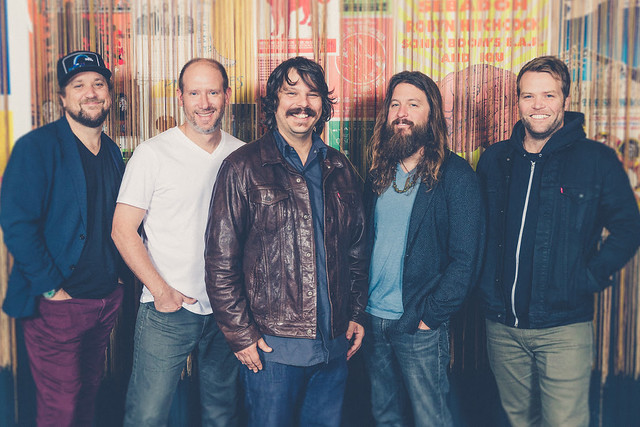From the moment of its stunning reveal, Anthem was positioned as BioWare’s triumphant entry into the burgeoning world of online looter-shooters. Backed by the studio’s legendary reputation for crafting deep, narrative-driven RPGs like Mass Effect and Dragon Age, the hype was palpable. Players envisioned soaring through a lush, alien world in powerful exosuits, experiencing a rich story with friends, and collecting epic loot. The initial gameplay trailers showcased breathtaking verticality, explosive combat, and a world teeming with danger and mystery. It promised to be the “Iron Man simulator” gamers had always dreamed of, blended with the compelling world-building and character development that were BioWare’s hallmarks. However, the journey from that dazzling E3 presentation to the game’s eventual launch and subsequent sunsetting is a complex and cautionary tale in modern game development. This article will provide a comprehensive deep dive into what Anthem was, what it promised, its troubled reality, and the enduring lessons its legacy offers to the industry.
Anthem’s potential was immense, built upon a foundation of truly exceptional core mechanics. The initial excitement was not unfounded; the game possessed a spark of brilliance that, for many, made its eventual shortcomings all the more frustrating. It was a game of stark contrasts—moments of pure, unadulterated fun juxtaposed with periods of deep frustration and tedium. Understanding this duality is key to understanding the game’s entire lifecycle, from its celebrated announcement to its quiet, lingering existence.
The Unfulfilled Promise of Bastion
At its heart, Anthem’s gameplay was defined by one singular, outstanding feature: the Javelin exosuits. These were not mere character classes; they were intricate war machines that fundamentally changed how players interacted with the world. The feeling of piloting a Javelin was, by almost all accounts, the game’s greatest success. This core experience was so strong that it carried the game for many players, even through its most significant flaws.
The Thrill of Flight and Combat
The true magic of Anthem was realized the moment you triple-jumped off a cliff and engaged your Javelin’s flight systems. The sense of freedom was unparalleled in the genre. Soaring through the beautiful, vertically-designed canyons and jungles of the world of Bastion, diving into water to cool your jets, and bursting back out into the sky was an exhilarating experience. This mechanic was seamlessly integrated into combat. Players could hover above the battlefield like a gunship, unleash a devastating ultimate ability, and then rocket away to a new vantage point. This dynamic mobility made the combat feel fast-paced and three-dimensional.
The four distinct Javelins catered to different playstyles:
- Ranger: The all-rounder, a versatile master of single-target damage and utility, akin to a standard soldier class.
- Colossus: The hulking tank, capable of wielding heavy weaponry and absorbing immense damage with its physical shield.
- Storm: The elemental mage, hovering above the fray to call down lightning, ice, and fire upon its enemies.
- Interceptor: The lightning-fast rogue, dashing in and out of combat with deadly melee strikes.
The interplay between these Javelins, especially when executing the game’s “combo” system (detonating status effects applied by teammates), created moments of spectacular cooperative chaos. When everything worked, Anthem’s combat was a symphony of explosions, elemental effects, and high-speed maneuvering.
A World of Contrasts: Fort Tarsis and Bastion
The game was split into two distinct experiences. Outside the walls, in the world of Bastion, you were a powerful Freelancer in a third-person action game. Inside the walls of Fort Tarsis, the game shifted to a slow-paced, first-person perspective. This was the narrative hub where players would interact with NPCs, pick up quests, and advance the story. While an interesting concept designed to foster a more personal connection with the characters, it created a jarring disconnect. The pacing shift was often unwelcome, pulling you out of the action and forcing you into slow walking segments to listen to exposition. The story itself, centered on the mysterious and world-shaping “Anthem of Creation,” had a promising premise but ultimately felt underdeveloped and disconnected from the core gameplay loop of missions and loot.
The Cracks in the Foundation: A Troubled Launch
Despite the brilliance of its core mechanics, Anthem’s launch in February 2019 was plagued by a host of critical issues that quickly eroded player goodwill. The problems were not minor bugs but fundamental flaws in the game’s design, content, and technical stability. These issues suggested a deeply troubled development cycle, a fact later confirmed by extensive investigative reporting.
The game’s potential was visible in every flight, every explosion. Yet, this potential was consistently undermined by a frustrating lack of content, baffling design choices, and a litany of technical problems.
The Content Deficit
The most glaring issue was the severe lack of meaningful content, particularly at the endgame. The main story campaign was relatively short, and once completed, players were left with a small, repetitive pool of activities. Missions largely boiled down to the same few objectives: fly to a location, defend a point, collect floating echoes, and defeat waves of enemies. The three “Strongholds”—Anthem’s version of dungeons or strikes—were visually impressive but quickly became monotonous after repeated playthroughs. The world of Bastion, while beautiful to fly through, felt static and empty. There was little incentive for exploration, as the “Freeplay” mode lacked dynamic events or meaningful secrets to discover, turning the stunning landscape into little more than a pretty corridor between objectives.
Technical Issues and Design Frustrations
Compounding the content problem was a mountain of technical and design issues. The game was infamous for its excessive and lengthy loading screens. A single mission could involve half a dozen loading screens, completely breaking the flow of gameplay. The loot system, the very core of a looter-shooter, was deeply flawed. Item inscriptions (the random stats on gear) were often useless or nonsensical, drop rates for high-tier loot were abysmal, and for a long time, players couldn’t even change their loadout without returning to Fort Tarsis via yet another loading screen. The game was also riddled with bugs, from minor visual glitches to game-breaking crashes that, in some reported cases, even shut down consoles. These frustrations created a user experience that felt actively hostile to the player’s time and enjoyment.
The Anthem NEXT Overhaul and Its Eventual Cancellation
In the face of overwhelming criticism, BioWare pledged to fix the game. They released a post-launch roadmap, but it was quickly abandoned as the team shifted focus to fixing the more fundamental underlying problems. The one major content update, a seasonal event called the “Cataclysm,” introduced a new area and new mechanics, and was generally seen as a step in the right direction. However, for a large portion of the player base, it was too little, too late.
Recognizing that simple patches wouldn’t suffice, BioWare announced in early 2020 that a small team was beginning work on a fundamental redesign of the game, codenamed “Anthem NEXT.” This news was a beacon of hope for the dedicated community that remained. The plan was to overhaul the core systems—loot, progression, the endgame loop—and rebuild Anthem into the game it was always meant to be. For over a year, the team provided sporadic updates, showing concept art and discussing new ideas, reigniting a flicker of optimism.
However, in February 2021, BioWare delivered the final blow: the Anthem NEXT project was canceled. Citing the challenges of working during the COVID-19 pandemic and the need to focus studio resources on the upcoming Dragon Age and Mass Effect titles, publisher EA and BioWare made the decision to cease all new development. The game would remain online in its current state, but the dream of a grand relaunch was dead. This decision, while understandable from a business perspective, was a profound disappointment to the fans who had held out hope for the game’s redemption.
The Enduring Legacy of a Flawed Masterpiece
Today, Anthem stands as one of the most significant cautionary tales in the AAA gaming space. Its failure provides critical lessons for developers and publishers alike. It highlights the immense danger of releasing a “live service” game without a robust, engaging, and sustainable content plan from day one. It demonstrates the perils of a troubled development cycle, where a lack of clear vision can lead to a product that feels disjointed and incomplete, no matter how brilliant some of its individual components may be.
Furthermore, Anthem’s story exposed the challenges of using proprietary game engines like Frostbite for genres they weren’t originally designed for, a struggle that reportedly contributed significantly to the development woes. It also served as a stark reminder that a studio’s prestigious reputation is not, by itself, a guarantee of success, especially when venturing into new and highly competitive genres.
Despite its failures, the game is not remembered with pure negativity. The core experience of flying and fighting in a Javelin remains a high point in game design, a mechanic so perfectly executed that many still wish it could be transplanted into a better, more complete game. It was a flash of brilliance in a sea of mediocrity, a glimpse of a phenomenal game that could have been.
Conclusion
Anthem’s journey is a story of ambition, potential, and ultimately, profound disappointment. It aimed for the sun, powered by the jetpacks of its incredible Javelins, but its wings were built with flawed materials. The game promised a rich, evolving world from a master storytelling studio but delivered a shallow, repetitive experience wrapped around a truly spectacular core mechanic. Its legacy is twofold: it serves as a stark warning about the pitfalls of modern AAA game development and the live service model, while also being remembered for the singular, joyous thrill of flight that no other game has quite managed to replicate. The servers remain online, a quiet monument to one of the most fascinating and frustrating “what ifs” in recent gaming history.






